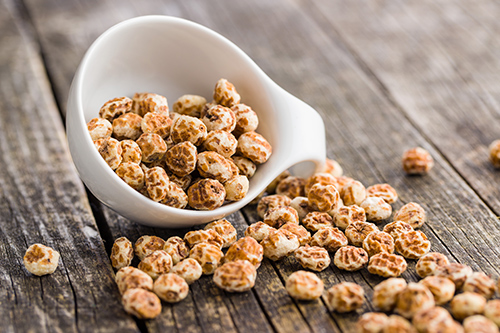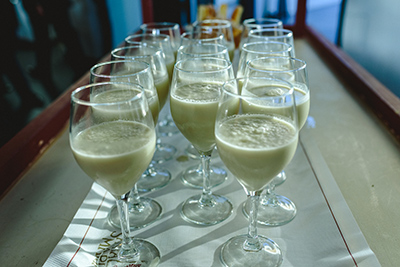Contents
The tiger nut health benefits have been known since the Middle Ages. The Arabs introduced its cultivation to the Spanish Levant. Since then, the drink made from this little tuber, horchata, has nourished and delighted people throughout the Mediterranean. Over the last several years, horchata has become well-known worldwide.

Tiger Nut Health Benefits
The tiger nut is rich in carbohydrates (sugars and starch). Its fats are comparable in makeup to olive oil, formed mainly of unsaturated fatty acids at eighty-five percent, among which linoleic acid stands out. Its proteins are of good biological value, containing vitamins B1 and E. Calcium, magnesium, and iron are among their essential minerals.
Tiger nut’s most exciting therapeutic component is its numerous and abundant enzymes that facilitate the indigestion of nutrients. Catalase, peroxidase, lipase, and amylase, among others, have been found. These enzymes make HORCHATA a much-appreciated beverage because it is: nutritious, aids digestion, is an astringent, and combats intestinal fermentation.

Drinking horchata (without sugar, if possible) is particularly beneficial in cases of dyspepsia (indigestion), colitis (intestinal inflammation), and diarrhea.
Tiger Nut Scientific Facts
- Scientific name: Cyperus esculentus L.
- Other names: Chufa, Earth almond
- French: Souchet
- Spanish: Chufa, cotufa
- German: Erdmandel
- Description: The tiger nut is a tuber of the botanical family Cyperaceae herbaceous plant. The tuber measures 1-2 cm in length.
- Environment: The tiger nut requires a temperate climate and fine soil. It is cultivated in the province of Valencia on the Mediterranean coast of Spain. Alboraya, a town in that province, is considered the tiger nut capital of the world.
How to use and Prepare Tiger Nut

Tiger nut tubers can be eaten as they are, chewing well after soaking in water for several hours.
Horchata: This is the most pleasant way to enjoy the tiger nut. These are the steps to prepare one liter of horchata:
- Soak 150 grams of tiger nuts for 24 hours.
- Place them in a blender until they form a homogenous paste.
- Soak the paste in a liter of water for one hour.
- Press and strain the paste, leaving the liquid horchata. It may be sweetened (no more than 150 grams of sugar per liter), and a little cinnamon may be added.
Horchata is a very healthful and refreshing beverage, comparable to milk in some aspects (it has fewer proteins and less calcium than milk, but more carbohydrates, iron, and magnesium.
| Horchata | Milk | |
| Carbohydrates | 5.2 grams | 4.8 grams |
| Fats | 3 grams | 3.2 grams |
| Proteins | 0.8 grams | 3.3 grams |
| Calcium | 7.6 grams | 129 mg |
| Phosphorous | 28 mg | 95 mg |
| Magnesium | 15.5 mg | 12 mg |
| Iron | 0.3 mg | 0.1 mg |
DISCLAIMER: All content on this website is presented solely for educational and informational objectives. Do not rely on the information provided as a replacement for advice, diagnosis, or treatment from a qualified medical expert. If you are pregnant, nursing, or have any preexisting medical concerns, talk to your doctor before using any herbal or natural medicines.
REFERENCES
- George D. Pamplona-Roger, M.D. “Encyclopedia of Foods and Their Healing Power.” George D. Pamplona-Roger, M.D. Encyclopedia of Foods and Their Healing Power. Trans. Annette Melgosa. Vol. 2. Chai Wan: Editorial Safeliz, 2005. 160. Print. [tiger nut health benefits]
- WebMD: https://www.webmd.com/diet/health-benefits-tiger-nuts
- Healthline: https://www.healthline.com/nutrition/tiger-nuts
- Cleveland Clinic: https://health.clevelandclinic.org/benefits-of-tiger-nuts
